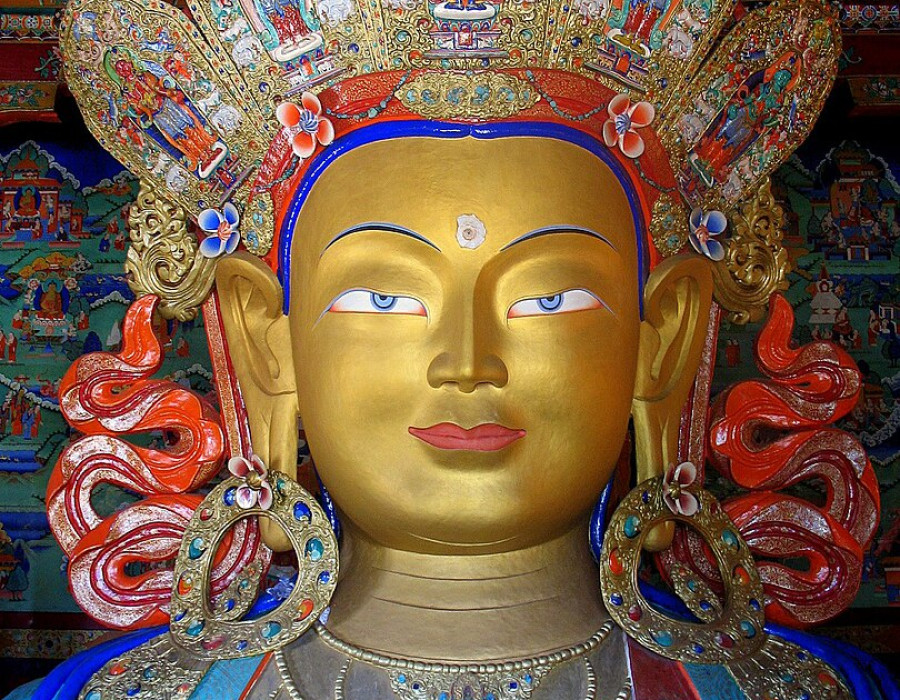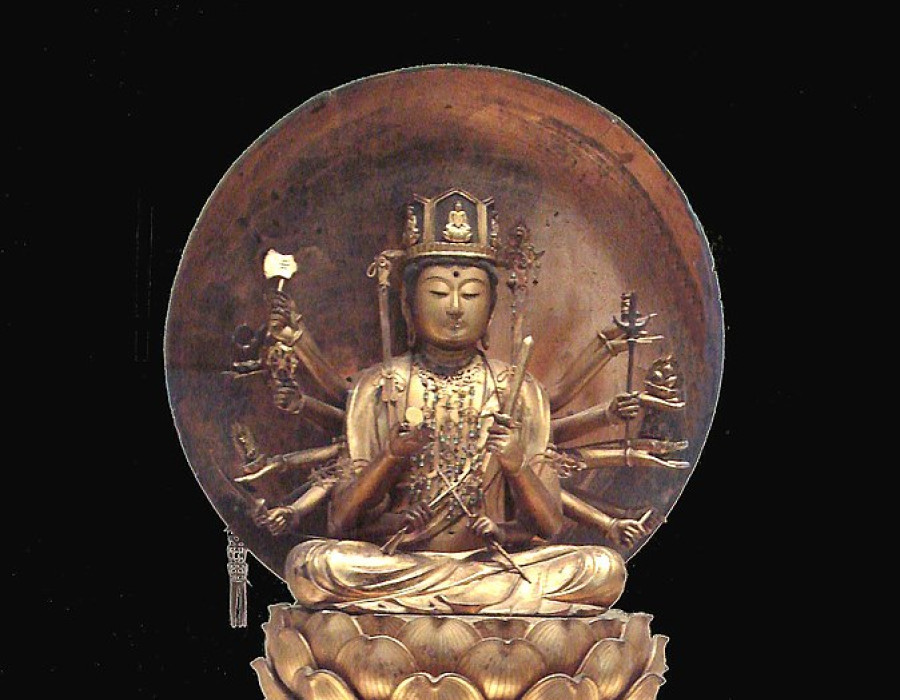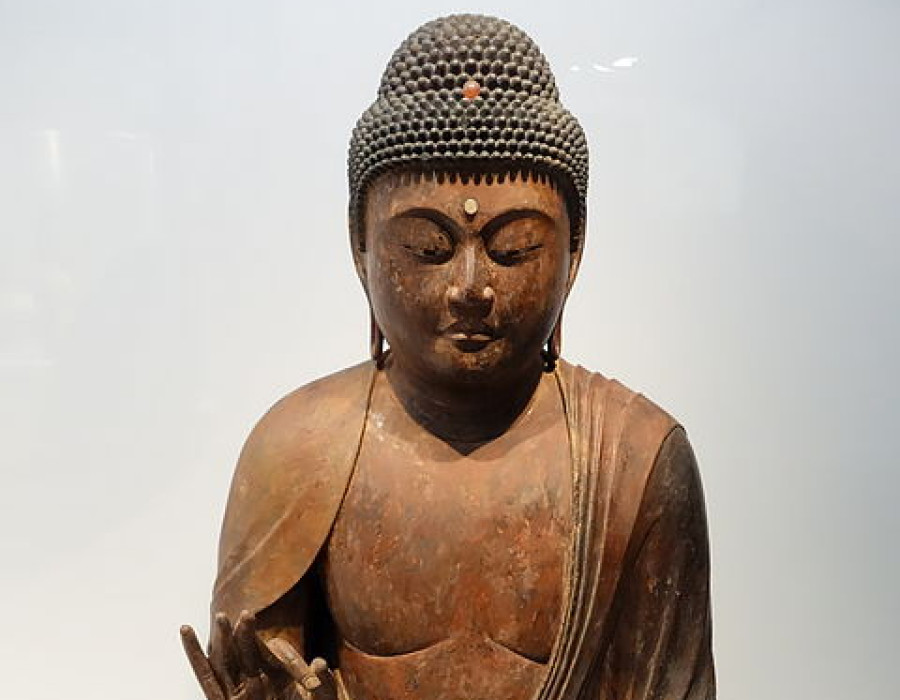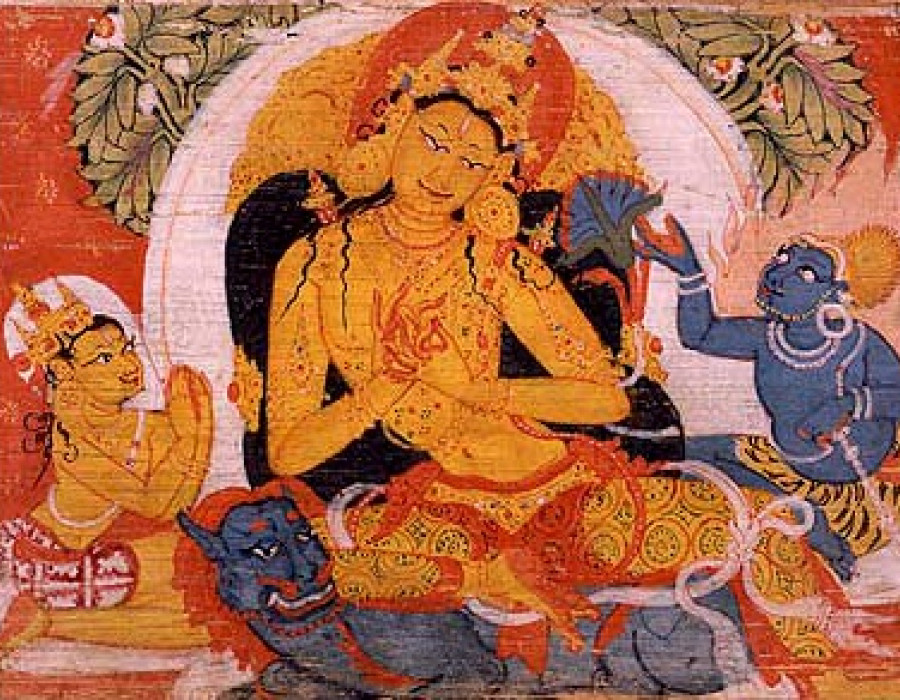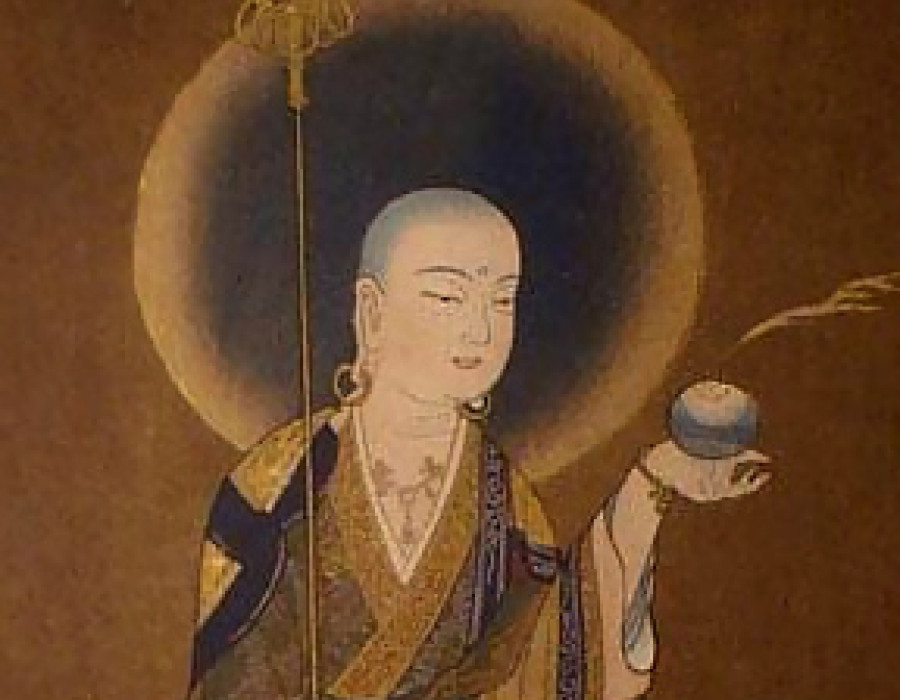
Martin Goodson
Vairocana | The Five Wisdom Buddhas
Not all Buddhas were considered flesh and blood or walked the earth. The Five Wisdom Buddhas are the Wisdom states as persons. The body of Vairocana is the body of the True Dharma.

The Five Wisdom Buddhas arose during the Mahayana development in India and were taken up by Tantric Buddhism. In Japan they appear in Shingon. These Buddhas differ from the Buddhas who appear in the lineage or who are said to have walked the earth at a certain time in a certain place as they represent principles of Mahayana teaching.

They are sometimes called ‘Meditation Buddhas’ to distinguish them and because they may only be encountered in the states of meditation that form their bodies.
Vairocana is called the ‘Sun Buddha’ and is the ‘First’ (Skt. Adi) or ‘Primoridial’ Buddha and sits in the central place of the Five Wisdom Buddhas mandala surrounded by the four other Wisdom Buddhas who sit at the cardinal points. His name in Japanese is Dainichi Nyorai – The Buddha of Universal Illumination. His names and attributes are all connected with light and illumination, rays of life-giving power that initiate, nourish and sustain as the sun does all life on earth.

In Mahayana teaching his body is the Body of the Dharma (Skt. Dharmakaya), and is synonymous with such terms in Zen as ‘True Nature’, ‘True Face’ and ‘Buddha-nature’. His nature is emptiness (Skt. Sunyata), the ‘unborn’ of which the Buddha spoke in the Pali Canon, without which that which is born and created could not come into being.
Vairocana first appeared in the Brahmajala Sutra, a 5th Century manuscript written in Sanskrit and translated into Chinese by Kumarajiva. The title translates into English as Brahma’s Net Sutra. This relates to the analogy used by the Buddha who described a net that spreads throughout the universe in the three dimensions of space: length, breadth and depth. Where three strands meet there is a jewel to hold them in place like a dewy spider’s web. Each jewel reflects both itself and all the other jewels in the net simultaneously. The feel of this image is used to point towards the reality of emptiness, the true nature of the Dharmakaya – which is the body of Vairocana.
“Now, I, Vairocana Buddha, am sitting atop a lotus pedestal; on a thousand flowers surrounding me are a thousand Sakyamuni Buddhas. Each flower supports a hundred million worlds; in each world a Sakyamuni Buddha appears. All are seated beneath a Bodhi-tree, all simultaneously attain Buddhahood. All these innumerable Buddhas have Vairocana as their original body. “
(The Brahma’s Net Sutra, tr. STC – US & Canada 2000)
As the primordial principle Vairocana speaks outside the phenomenal world where all time is simultaneous. Although in the phenomenal world he has this or that name and is portrayed using this or that hand position (mudra), wearing certain garments and headdress, in truth he is beyond conceptual imagination and yet is ever present in each form, as Master Hakuin wrote: ‘‘like salt in seawater or glue in paint.”
In Shingon Buddhism he is represented by the Sanskrit letter ‘A’ which expresses life & death; emergence & return.
The mantra associated with Vairocana is:
Om a-vi-ra-hûm-kham vajradhâtu vam (Skt.)
Om All Pervading One; Imperishable One



